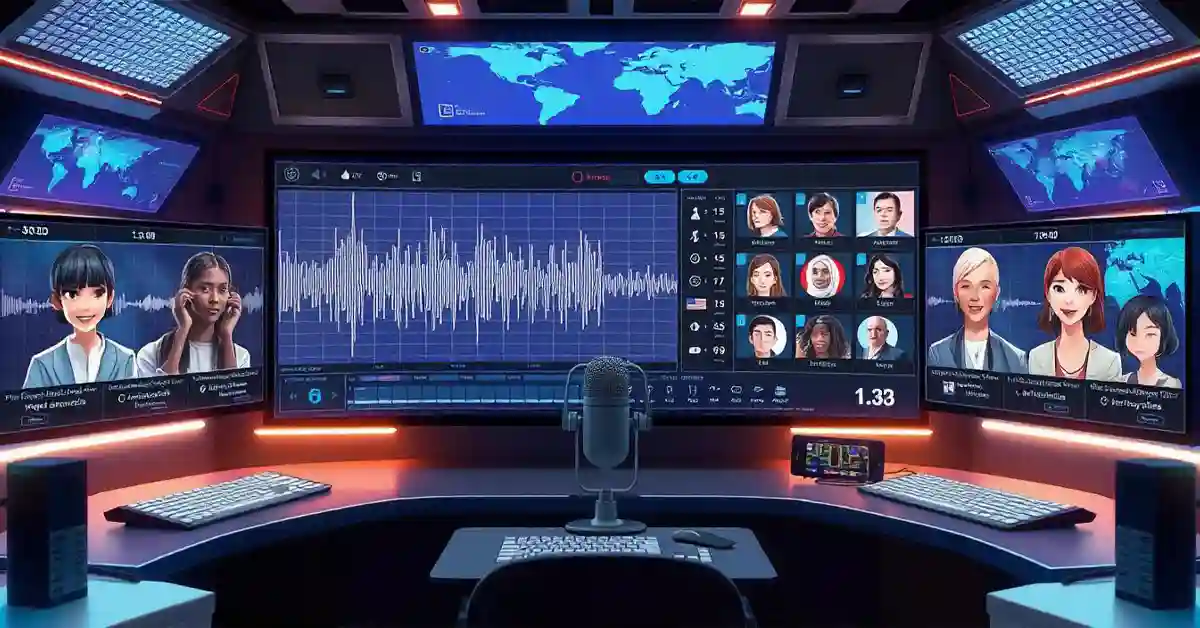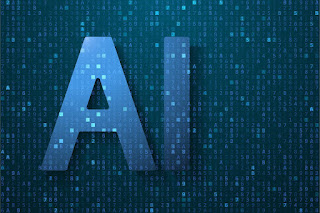The voice-over market, which was traditionally controlled by human talent, is fast changing with the introduction of artificial intelligence (AI). In 2024, AI-powered tools with unparalleled flexibility, efficiency, and creativity will change the voice-over landscape. This blog delves into the future of AI-powered voice-overs, emphasizing the important themes to watch this year and discussing the role of AI voice over generators in defining that future.
The Rise of AI Voice Over Generators
AI voiceover generators have transformed the way voiceovers are created. These tools use advanced machine learning algorithms to generate lifelike voiceovers in a fraction of the time it would take a human voice actor. AI voice over generators can recreate multiple tones, dialects, and emotions by analyzing large databases of human speech, making them very adaptable and capable of satisfying a wide range of voice-over requirements.
One of the most significant benefits of AI voice over generators is its capacity to generate voiceovers on demand. AI can provide high-quality voice-overs in minutes, saving businesses time and money. As we approach 2024, the usage of these technologies is likely to rise across industries, driven by the demand for rapid, scalable, and cost-effective voice-over solutions.
Trend 1: Increased personalization and customization
In 2024, personalization will be a major trend in AI-powered voice-overs. As AI voice over generators get more complex, users will have more control over the speech characteristics, allowing them to tailor voice-overs to their brand identity or specific project needs. Businesses will be able to build distinct voice profiles that represent their brand’s tone and style, providing consistency across all audio output.
Furthermore, advances in AI technology will enable real-time modifications to voiceovers. Users may adjust the pitch, tempo, and emotional tone of the AI-generated voice in real-time, making it easier to create the desired effect. This amount of customization will make AI voice-overs more enticing to content makers, marketers, and organizations trying to establish a unique audio presence.
Trend 2: Multilingual Capabilities and Global Reach
As globalization continues to impact the economic landscape, the demand for multilingual content is increasing. AI voice over generators are stepping up to fulfil this need by providing multilingual features that enable organisations to create voice-overs in different languages fast and efficiently.
In 2024, we may expect AI voice over generators to become even more adept at managing multiple languages and dialects, allowing businesses to reach worldwide audiences more easily. These techniques not only translate text into other languages but also ensure that the voice-overs sound natural and culturally suitable for each target audience.
The capacity to produce high-quality voiceovers in several languages will be especially useful in businesses like e-learning, marketing, and entertainment, where addressing a varied audience is critical. AI-powered voice-overs will enable businesses to overcome language hurdles and engage with customers on a deeper level.
Trend 3: Integration with other AI technologies
AI voice over generators are no longer used in isolation; they are rapidly being coupled with other AI technologies to improve usefulness and usability. In 2024, we may expect to see more AI-powered voice-over tools integrated with AI-driven video generators, natural language processing (NLP) systems, and virtual assistants.
For example, AI voice over generators can be combined with AI video generators to produce fully automated video content with synchronized audio. This integration will simplify the content creation process, allowing businesses to create videos with professional-quality voice-overs without the need for a human voice actor or editor.
Similarly, AI voice over generators can collaborate with NLP systems to create voice-overs that respond to user input in real-time. This will be especially valuable in applications like virtual assistants, chatbots, and interactive learning systems, where dynamic and responsive audio material is required.
Trend 4: Improved Voice Realism and Emotional Expression
One of the issues encountered by early AI voice over generators was a lack of emotional depth in the generated voice-overs. While these systems could generate clear and correct speech, they frequently struggled to portray emotions accurately. However, this is gradually changing, and by 2024, AI voice over generators will be capable of producing voice-overs with significantly higher levels of emotional realism.
Advances in deep learning and neural networks are allowing AI systems to better grasp and imitate the intricacies of human speech, including emotional expression. As a result, AI-generated voiceovers will sound more realistic and human-like, capable of conveying a wide spectrum of emotions, including joy, enthusiasm, sadness, and wrath.
This breakthrough in voice realism will have a significant impact on businesses such as entertainment, gaming, and advertising, where emotional connection is critical. AI voice over generators will enable producers to create emotionally charged content that grabs the audience’s attention and elicits the appropriate response.
Trend 5: Ethical Considerations for Responsible AI Use
As AI voice over generators get more advanced, ethical concerns about their use will emerge. In 2024, the industry will have to address concerns about the possible misuse of AI-generated voiceovers, such as deepfake audio, as well as the impact on human voice actors.
To reduce these hazards, developers, and consumers of AI voice over generators must adopt ethical AI practices. This involves putting measures in place to prevent the creation of false or damaging content, as well as guaranteeing transparency when using AI-generated voiceovers.
In addition, ethical principles and industry standards will be more important in governing the use of AI in the voice-over sector.
Another ethical problem is the future replacement of human voice actors by artificial intelligence. While AI voice over generators provide numerous benefits, it is critical to acknowledge the importance of human creativity and ability in the voice-over profession. In 2024, we may witness a push for collaboration between AI and human voice actors, with AI tools utilized to improve and complement human performance rather than replace it.
Trend 6: Adoption in Various Industries
AI voice over generators are being used in a variety of industries, each with its own set of requirements and uses. By 2024, we can anticipate AI-powered voice-overs being employed in businesses such as:
E-Learning: AI voice over generators will play an important part in the e-learning business, allowing for the rapid generation of voiceovers for educational content. This would enable educators to design personalized and adaptive learning experiences for students from various languages and areas.
Marketing and advertising: AI-powered voice-overs will be utilized to create compelling and persuasive audio material for marketing efforts ranging from radio ads to social media videos. Brands will profit from the opportunity to create consistent and customized voice-overs that correspond to their messaging.
In the entertainment sector, AI voice-over generators will be utilized to create voice-overs for video games, animations, and virtual reality. The capacity to create different and emotionally expressive voices will improve the immersive nature of these encounters.
Customer Service: AI voice-over generators will be linked to customer service platforms, resulting in automated voice responses that sound natural and are sensitive to consumer requests. This will increase the effectiveness and quality of consumer interactions.
Conclusion: The Future Is AI-Driven
As we look ahead to 2024, it’s evident that AI-powered voice-overs will become the dominant force in the market. With improvements in the best AI apps and voice-over generators, we may expect more personalized, multilingual, and emotionally realistic voice-overs to meet the diverse needs of businesses and creators.
However, these advancements bring new obligations. Ethical considerations and appropriate AI use will be critical in ensuring that the benefits of AI-powered voice-overs are realized while maintaining the industry’s integrity and the value of human talent.










